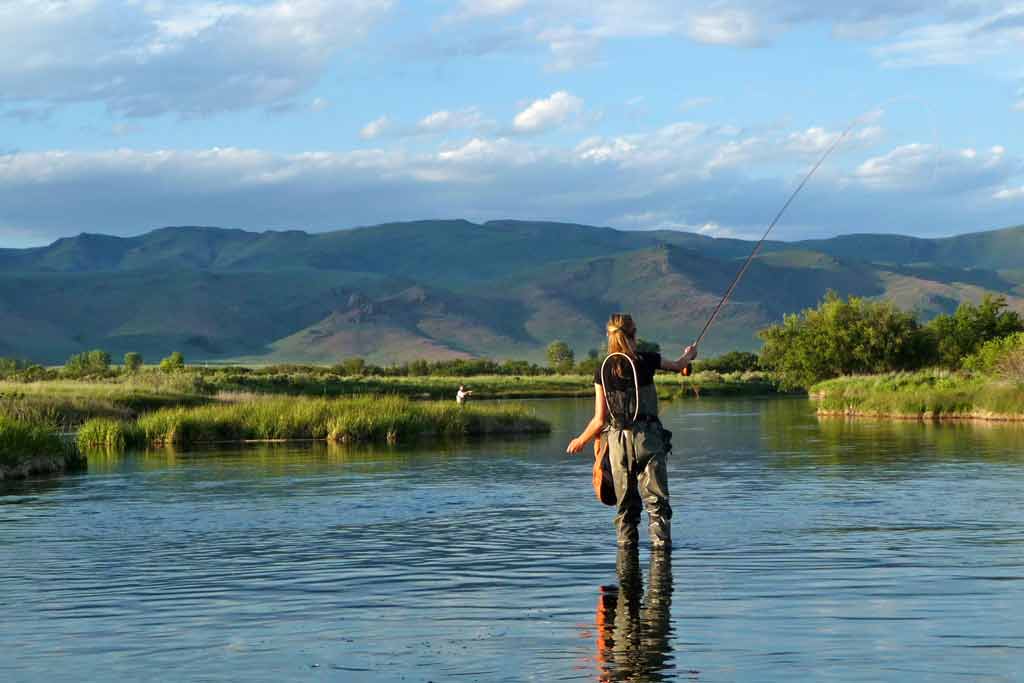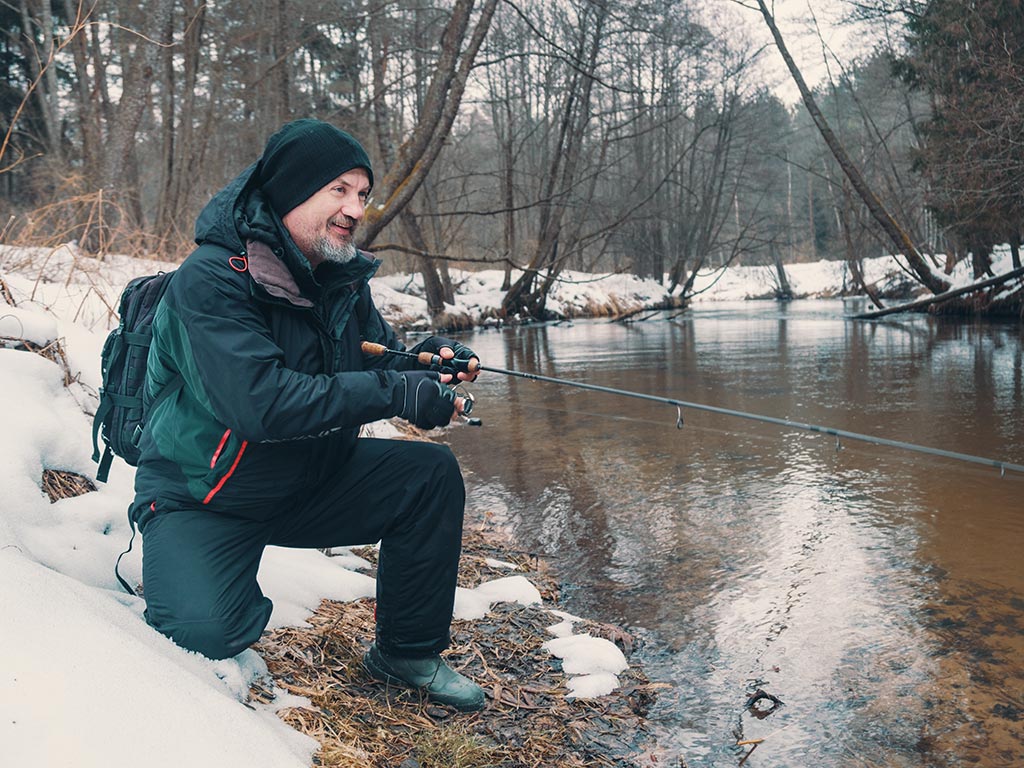Fishing success largely depends on understanding how seasonal changes influence fish behavior and selecting the appropriate lures accordingly. Each season brings unique environmental conditions that impact fish activity, feeding patterns, and habitat preferences.
The allure of fishing transcends seasons. Yet, for the astute angler, each turn of the calendar page presents a unique opportunity. As the natural world undergoes its annual transformation, so too do the behaviors and preferences of the fish that inhabit it. Understanding this seasonal dance is paramount to achieving consistent success on the water. This comprehensive guide delves into the intricacies of fish behavior across the seasons, empowering you to select the perfect lure to match their ever-changing needs.
Spring: A Season of Renewal
Spring paints a vibrant picture across the aquatic landscape. Water temperatures rise, awakening fish from their winter slumber. Here’s a breakdown of fish behavior and corresponding lure selections for this dynamic season:
- Fish Behavior:
- Increased Activity: Warmer water ignites a surge in fish activity. Many species, including bass, walleye, and trout, prepare for spawning, exhibiting territoriality and heightened feeding drives.
- Pre-Spawn: Fish focus on building energy reserves for spawning. They actively seek prey like baitfish and crawfish.
- Spawn: Fish become highly protective of their nests, exhibiting aggressive behavior towards intruders.
- Post-Spawn: After spawning, fish are ravenous to replenish lost energy. Their feeding activity intensifies.

- Lure Selection:
- Pre-Spawn: Jigs, crankbaits, and soft plastics that mimic crawfish and baitfish are ideal. Opt for natural colors that blend with the environment.
- Spawn: Topwater presentations with soft plastic worms or lizards can trigger a defensive reaction from fish guarding their nests.
- Post-Spawn: Faster-moving lures like spinnerbaits and topwater plugs capitalize on the increased feeding activity of post-spawn fish.
Summer: The Quest for Cool Comfort
Summer brings scorching heat and longer daylight hours. Fish adapt to these conditions by seeking cooler, deeper waters or shade during the peak heat of the day. Here’s what you need to know to keep your catches coming:
- Fish Behavior:
- Thermal Discomfort: Warmer water temperatures can lead to lethargy in fish. They become more selective in their feeding and seek areas with cooler temperatures, such as thermoclines (the layer where water temperature rapidly changes) or deeper structures.
- Light and Feeding: Fish tend to be more active during low-light periods like dawn, dusk, and overcast days.
- Nocturnal Hunters: Some species, like catfish, become more active at night when water temperatures are cooler.
- Lure Selection:
- Early Morning/Late Evening: Topwater lures like poppers and frogs entice fish feeding near the surface during low-light periods.
- Midday: Target fish in deeper, cooler waters with deep-diving crankbaits, Texas-rigged worms, and drop shots. These lures reach depths where fish are seeking refuge from the heat.
- Night Fishing: Glow-in-the-dark lures or baits with strong scents are effective for attracting nocturnal feeders like catfish.

Fall: A Feast Before the Freeze
Fall ushers in a transitional period. As water temperatures dip, fish enter a feeding frenzy to build fat reserves for the coming winter. Here’s how to adjust your strategy to capitalize on this autumnal bounty:
- Fish Behavior:
- Feeding Frenzy: Fish exhibit aggressive feeding behavior as they prepare for the lean winter months. They target baitfish like shad and herring in large numbers.
- Habitat Shifts: As water cools, fish may migrate to deeper areas or areas with warmer pockets.
- Lure Selection:
- Baitfish Imitations: Lures that mimic shad and herring patterns are highly effective. Consider crankbaits, swimbaits, and jerkbaits in realistic baitfish colors.
- Jigs and Spoons: These lures can be used to mimic dying baitfish, a tempting target for fish in cooler, deeper waters.
- Varied Retrieval Speeds: Experiment with different retrieve speeds to match the changing feeding activity of fish. As water temperatures drop, fish may become less aggressive, so adjust your retrieve speed accordingly.
Winter: A Time for Patience and Precision
Winter presents the ultimate test for anglers. Fish metabolism slows down significantly, leading to reduced activity levels. Here are some key strategies to entice bites during the coldest months:
- Fish Behavior:
- Reduced Activity: Fish conserve energy in cold water, exhibiting minimal movement and feeding activity.
- Deeper Depths: Fish congregate in deeper parts of the water body where temperatures are slightly warmer and more stable.
- Lure Selection:
- Slow Presentation: Since fish are less active, lures that can be presented slowly and entice bites without expending much energy for the fish are crucial. Jigs, blade baits, and soft plastics with subtle vibrations are excellent choices.
- Smaller Lures: Downsize your lures to match the reduced prey intake of fish in cold water. Smaller profile crankbaits, finesse jigs with soft plastic trailers, and small spoons are more likely to get noticed and trigger strikes.
- Vertical Jigging: This technique excels in deeper waters where fish are concentrated during winter. Jigging lures like blade baits and heavy jigs entice bites by creating vibrations that travel well through the water column, attracting fish that might not be actively searching for food.

Beyond the Seasons: Adapting to Weather Conditions
Understanding seasonal trends is just the first step. Weather conditions within each season can also influence fish behavior. Here are some additional factors to consider when selecting lures:
- Overcast Days: When skies are overcast, light penetration is reduced. Opt for brightly colored lures that stand out in low-light conditions. Chartreuse, orange, and white are good choices.
- Sunny Days: On bright sunny days, natural and subtle colors are more effective as they blend with the surroundings and appear less conspicuous to wary fish. Opt for green pumpkin, brown, and black colored lures.
- Windy Conditions: Wind can make lure presentation and control challenging. Heavier lures allow you to maintain better control and reach desired depths even in strong winds. Consider deep-diving crankbaits, large profile jigs, and weighted swimbaits.
- Post-Rain: After rainfall, water runoff can introduce insects, worms, and other debris into the water. Lures that mimic these food sources, such as small finesse jigs, curly-tailed grubs, and nightcrawlers, can be highly effective in post-rain conditions.
Choosing the right size and weight for your fishing gear involves understanding the behavior of the target species, the fishing environment, and the specific techniques you plan to use. By balancing rod action, power, and line weight with your fishing style and the conditions you’ll face, you can enhance your chances of success on the water.

Robert Smith is the proud owner of Bait Barrels and Bows, a premier fishing sports store established in 1989. With over three decades of experience in the industry, Robert has honed his skills to become an expert angler, sharing his vast knowledge and passion for fishing with enthusiasts around the world. Through his store and writings, Robert provides invaluable tips and guidance, helping both novice and seasoned anglers improve their techniques and enjoy the sport to its fullest. His commitment to the fishing community is evident in his dedication to quality products and excellent customer service.

